Abstract
In guinea-pigs it has been shown that resistance to ticks is an acquired, immunologically mediated phenomenon. It has been suggested recently that epidermal Langerhans cells (LC) may play roles in the mechanisms of resistance to ticks. The ATPase-positive epidermal LC of guinea-pigs have been shown to be depleted for a period of several days following u.v. irradiations. In this study, u.v. treatment of guinea-pigs' ears before primary tick infestations resulted in a significant reduction of acquired resistance to ticks. When u.v. treatments were applied to resistant animals prior to the challenge infestations, a marked reduction in expression of resistance to ticks was demonstrated. These results can be interpreted to imply that functional LC in the epidermis are required for both the normal acquisition and the expression of the guinea-pig's immune responses to D. andersoni infestations.
Full text
PDF
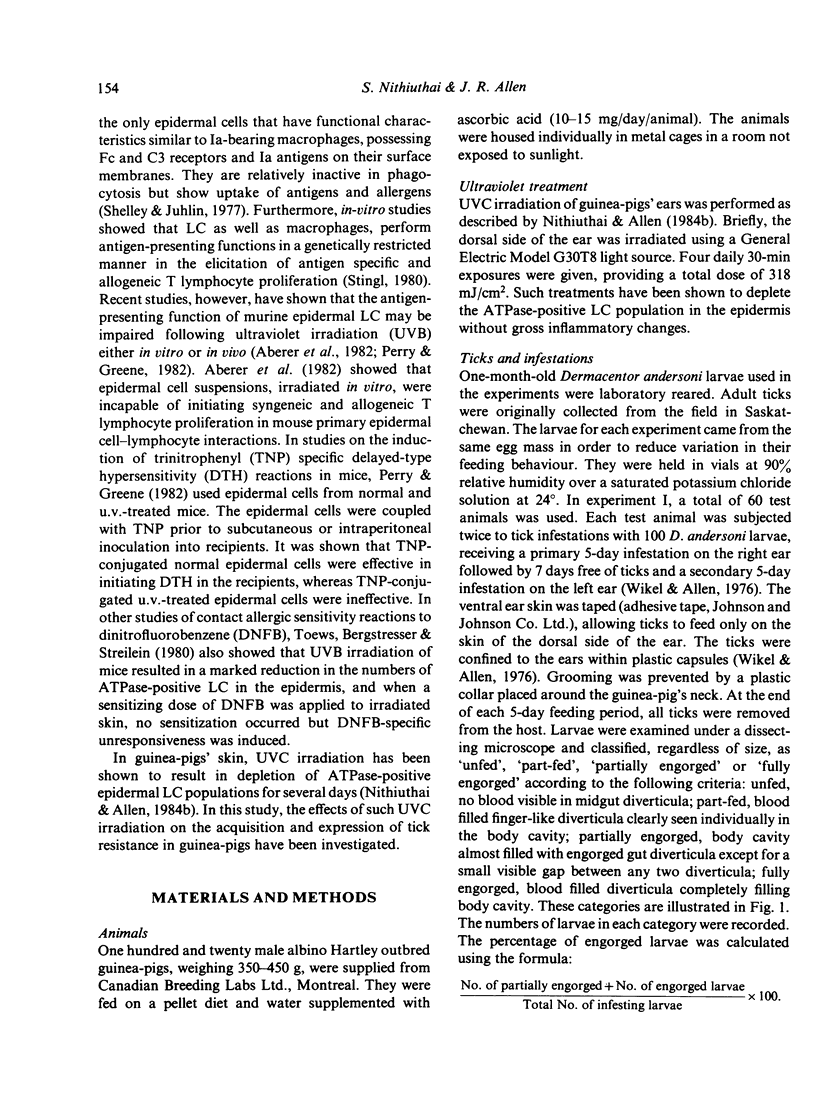
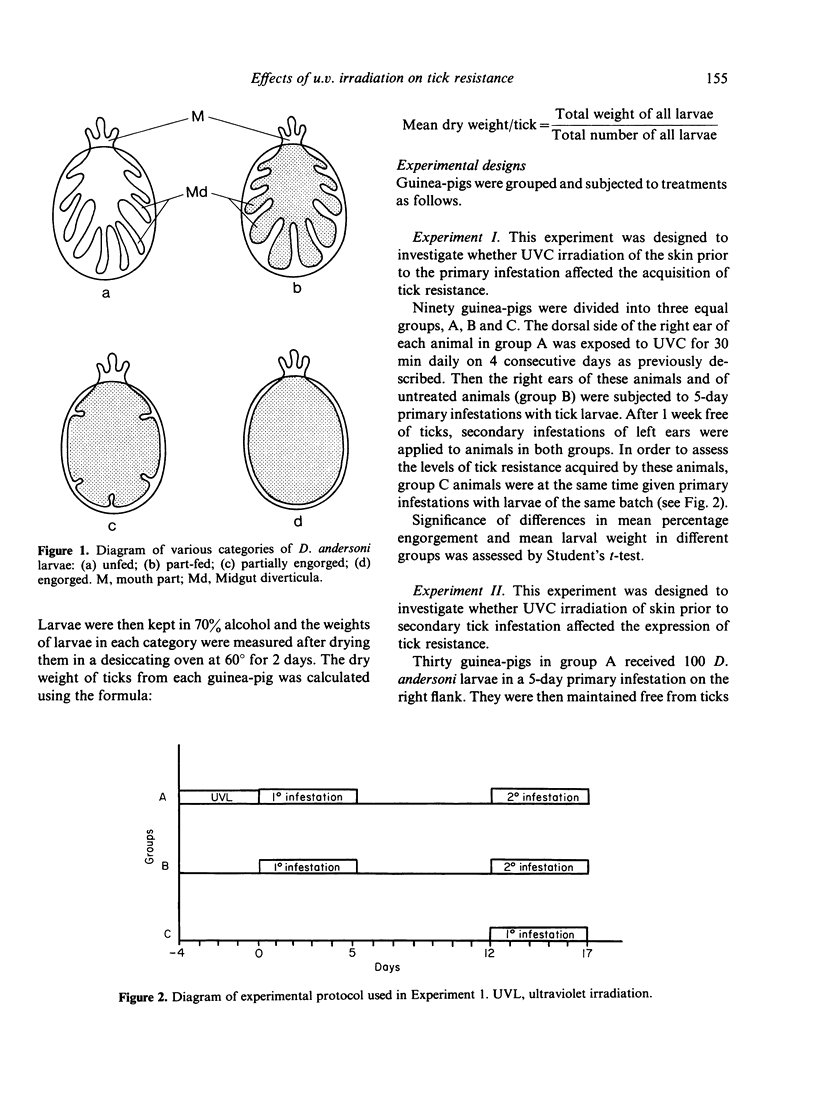
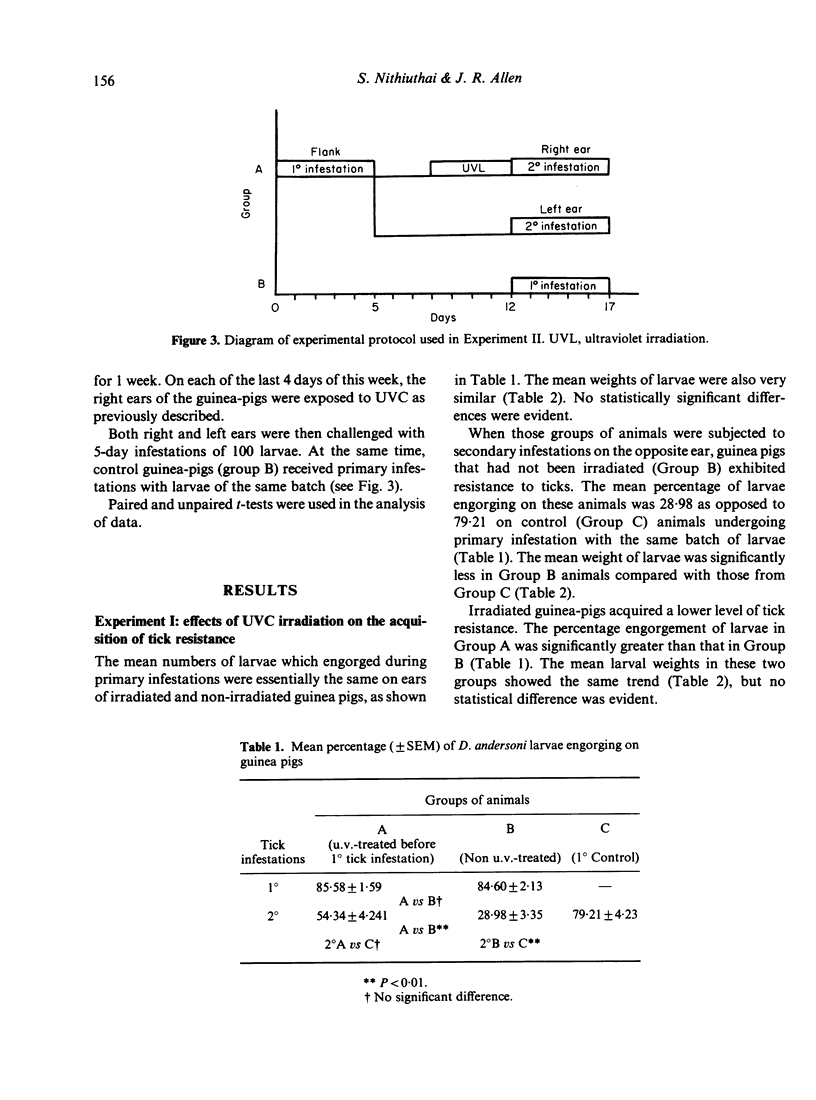
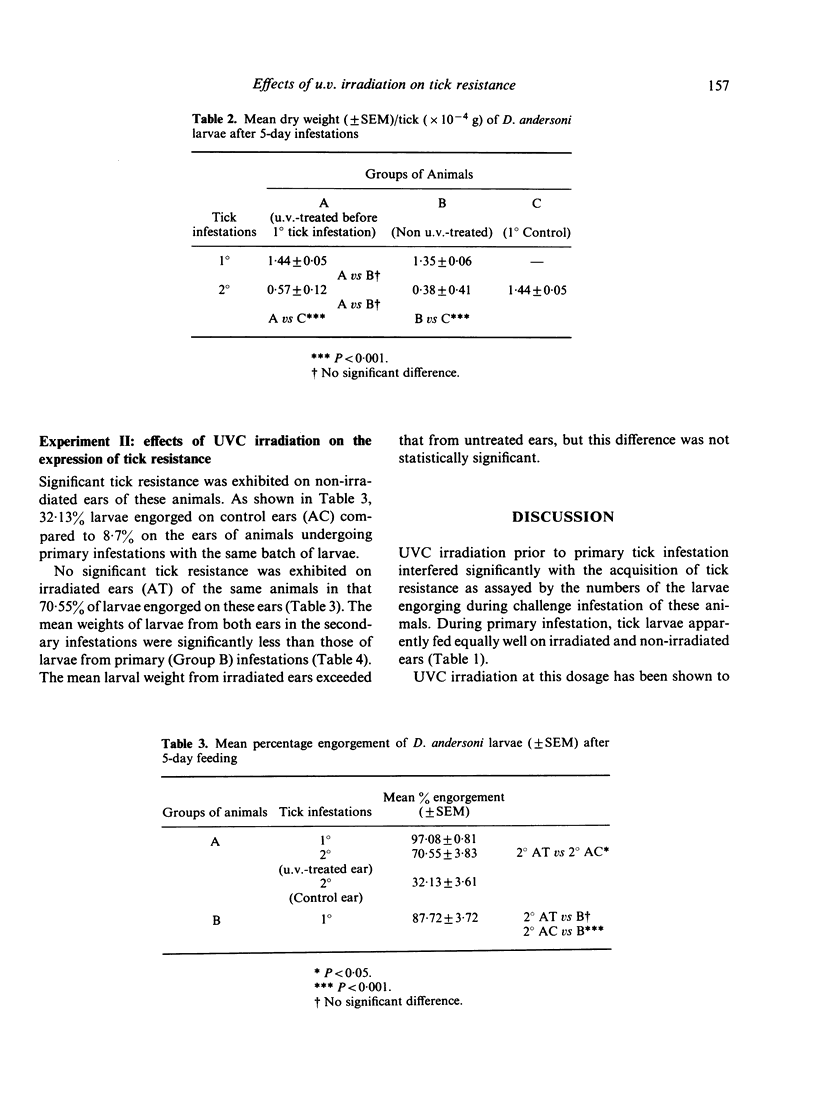
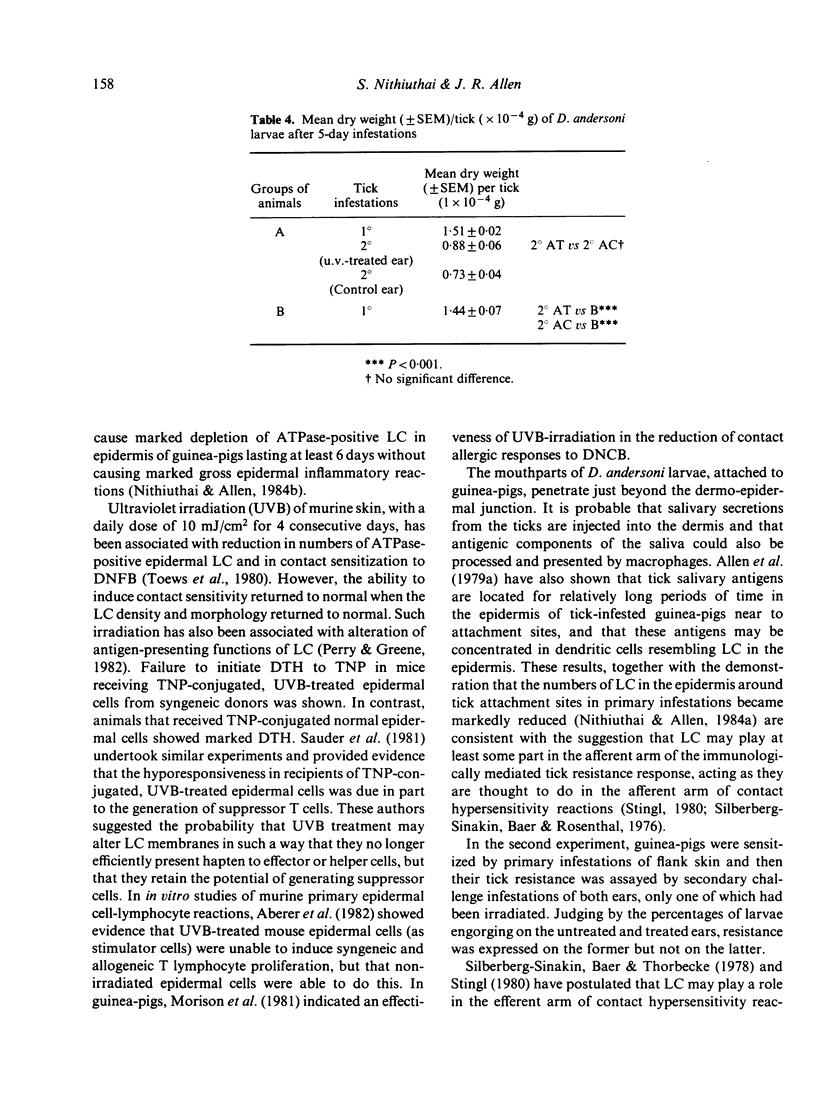
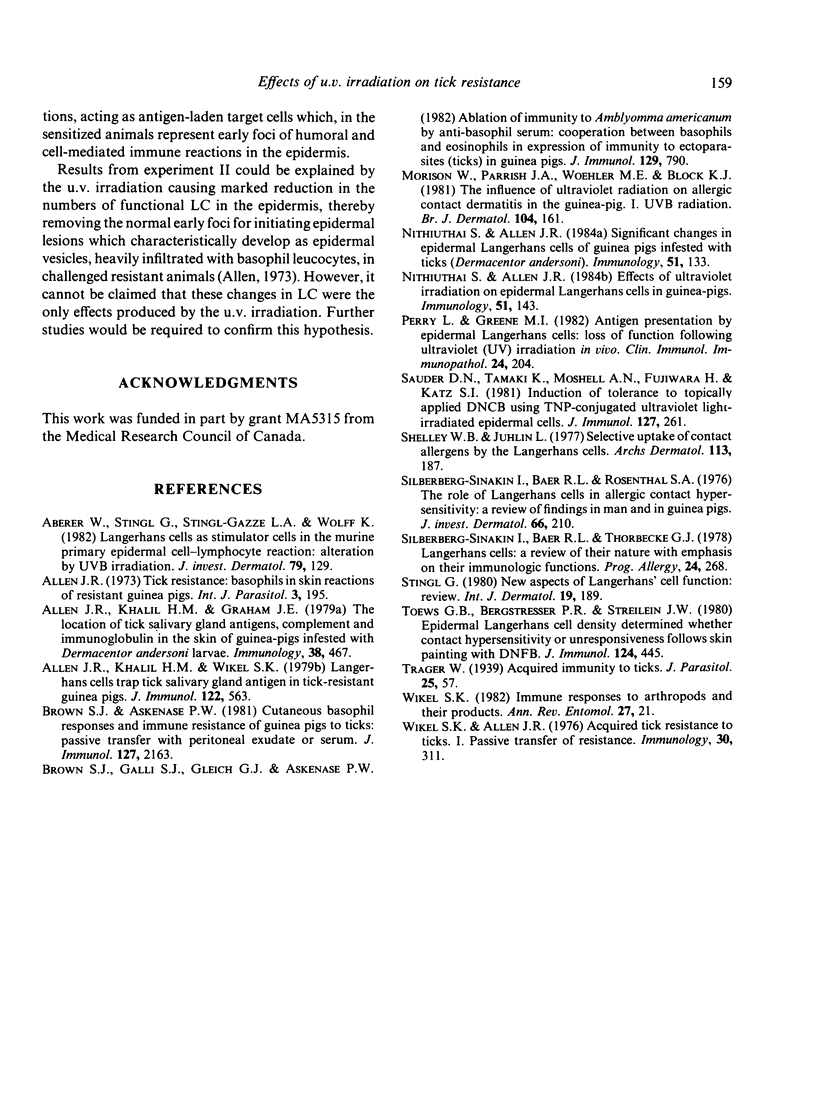
Selected References
These references are in PubMed. This may not be the complete list of references from this article.
- Aberer W., Stingl G., Stingl-Gazze L. A., Wolff K. Langerhans cells as stimulator cells in the murine primary epidermal cell-lymphocyte reaction: alteration by UV-B irradiation. J Invest Dermatol. 1982 Aug;79(2):129–135. doi: 10.1111/1523-1747.ep12500040. [DOI] [PubMed] [Google Scholar]
- Allen J. R., Khalil H. M., Graham J. E. The location of tick salivary antigens, complement and immunoglobulin in the skin of guinea-pigs infested with Dermacentor andersoni larvae. Immunology. 1979 Nov;38(3):467–472. [PMC free article] [PubMed] [Google Scholar]
- Allen J. R., Khalil H. M., Wikel S. K. Langerhans cells trap tick salivary gland antigens in tick-resistant guinea pigs. J Immunol. 1979 Feb;122(2):563–565. [PubMed] [Google Scholar]
- Allen J. R. Tick resistance: basophils in skin reactions of resistant guinea pigs. Int J Parasitol. 1973 Mar;3(2):195–200. doi: 10.1016/0020-7519(73)90024-6. [DOI] [PubMed] [Google Scholar]
- Brown S. J., Askenase P. W. Cutaneous basophil responses and immune resistance of guinea pigs to ticks: passive transfer with peritoneal exudate cells or serum. J Immunol. 1981 Nov;127(5):2163–2167. [PubMed] [Google Scholar]
- Brown S. J., Galli S. J., Gleich G. J., Askenase P. W. Ablation of immunity to Amblyomma americanum by anti-basophil serum: cooperation between basophils and eosinophils in expression of immunity to ectoparasites (ticks) in guinea pigs. J Immunol. 1982 Aug;129(2):790–796. [PubMed] [Google Scholar]
- Morison W. L., Parrish J. A., Woehler M. E., Bloch K. J. The influence of ultraviolet radiation on allergic contact dermatitis in the guinea-pig. I. UVB radiation. Br J Dermatol. 1981 Feb;104(2):161–164. doi: 10.1111/j.1365-2133.1981.tb00039.x. [DOI] [PubMed] [Google Scholar]
- Nithiuthai S., Allen J. R. Effects of ultraviolet irradiation on epidermal Langerhans cells in guinea-pigs. Immunology. 1984 Jan;51(1):143–151. [PMC free article] [PubMed] [Google Scholar]
- Nithiuthai S., Allen J. R. Significant changes in epidermal Langerhans cells of guinea-pigs infested with ticks (Dermacentor andersoni). Immunology. 1984 Jan;51(1):133–141. [PMC free article] [PubMed] [Google Scholar]
- Perry L. L., Greene M. I. Antigen presentation by epidermal Langerhans cells: loss of function following ultraviolet (UV) irradiation in vivo. Clin Immunol Immunopathol. 1982 Aug;24(2):204–219. doi: 10.1016/0090-1229(82)90232-x. [DOI] [PubMed] [Google Scholar]
- Sauder D. N., Tamaki K., Moshell A. N., Fujiwara H., Katz S. I. Induction of tolerance to topically applied TNCB using TNP-conjugated ultraviolet light-irradiated epidermal cells. J Immunol. 1981 Jul;127(1):261–265. [PubMed] [Google Scholar]
- Shelley W. B., Juhlin L. Selective uptake of contact allergens by the Langerhans cell. Arch Dermatol. 1977 Feb;113(2):187–192. [PubMed] [Google Scholar]
- Silberberg-Sinakin I., Baer R. L., Thorbecke G. J. Langerhans cells: a review of their nature with emphasis on their immunologic functions. Prog Allergy. 1978;24:268–294. [PubMed] [Google Scholar]
- Silberberg I., Baer R. L., Rosenthal S. A. The role of Langerhans cells in allergic contact hypersensitivity. A review of findings in man and guinea pigs. J Invest Dermatol. 1976 Apr;66(4):210–217. doi: 10.1111/1523-1747.ep12482139. [DOI] [PubMed] [Google Scholar]
- Stingl G. New aspects of Langerhans' cell function. Int J Dermatol. 1980 May;19(4):189–213. doi: 10.1111/j.1365-4362.1980.tb00297.x. [DOI] [PubMed] [Google Scholar]
- Toews G. B., Bergstresser P. R., Streilein J. W. Epidermal Langerhans cell density determines whether contact hypersensitivity or unresponsiveness follows skin painting with DNFB. J Immunol. 1980 Jan;124(1):445–453. [PubMed] [Google Scholar]
- Wikel S. K., Allen J. R. Acquired resistance to ticks. I. Passive transfer of resistance. Immunology. 1976 Mar;30(3):311–316. [PMC free article] [PubMed] [Google Scholar]
- Wikel S. K. Immune responses to arthropods and their products. Annu Rev Entomol. 1982;27:21–48. doi: 10.1146/annurev.en.27.010182.000321. [DOI] [PubMed] [Google Scholar]


